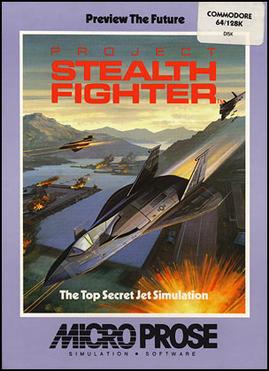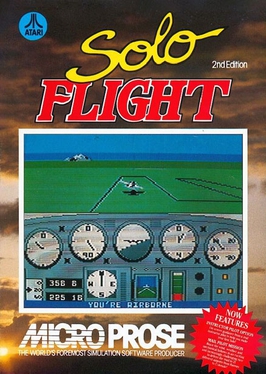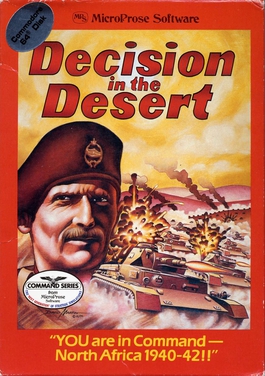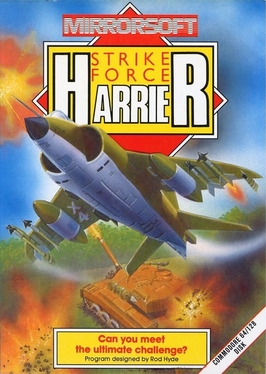
Silent Service is a submarine simulator video game designed by Sid Meier and published by MicroProse for various 8-bit home computers in 1985 and for 16-bit systems like the Amiga in 1987. A Nintendo Entertainment System version developed by Rare was published in 1989 by Konami in Europe and by Konami's Ultra Games subsidiary in North America. Silent Service II was released in 1990. Tommo purchased the rights to this game and published it online through its Retroism brand in 2015.

688 Attack Sub is a submarine simulator video game designed by John W. Ratcliff and Paul Grace and published in 1989 for MS-DOS and in 1990 for Amiga by Electronic Arts. A Sega Genesis version developed by MicroProse was released in 1991 by Sega.

Sid Meier's Pirates! is a video game created by Sid Meier for the Commodore 64 and published by MicroProse in May 1987. It was the first game to include the name "Sid Meier" in its title as an effort by MicroProse to attract fans of Meier's earlier games, most of which were combat vehicle simulation video games. The game is a simulation of the life of a pirate, a privateer, or a pirate hunter in the 16th, 17th and 18th centuries. It was widely ported to other systems.

F-19 Stealth Fighter is a combat flight simulator developed and released in 1988 and 1990 by MicroProse, featuring a fictional United States military aircraft. It is the 16-bit remake of the 8-bit game Project Stealth Fighter, which was released for the Commodore 64 in 1987. It was also ported to the NEC PC-9801 in Japan only, and the DOS version was re-released on Steam distribution platform in 2015.

Gunship is a combat flight simulation video game developed and published by MicroProse in 1986. In the game, controlling a simulated AH-64 Apache helicopter, players navigate through missions to attack enemy targets and protect friendly forces. Commercially and critically successful, Gunship was followed by Gunship 2000 and Gunship!.

Infiltrator is a combat flight simulation game published in North America in 1986 by Mindscape and in Europe by U.S. Gold. It was developed for the Commodore 64, MS-DOS, Apple II, and Atari 8-bit computers by Chris Gray Enterprises. Paragon Programming ported it to the Amstrad CPC and ZX Spectrum.

Project Stealth Fighter is a combat flight simulator released for the Commodore 64 in 1987 by MicroProse, featuring a fictional United States military aircraft. During the time of the game's release, there was heavy speculation surrounding a missing aircraft in the United States Air Force's numbering system, the F-19. Project Stealth Fighter was later renamed F-19 Stealth Fighter and was remade in 1988 for the 16-bit systems with much improved graphics.

Ace of Aces is a combat flight simulation game developed by Artech Digital Entertainment and published in 1986 by Accolade in North America and U.S. Gold in Europe. It was released for the Amstrad CPC, Atari 8-bit computers, Atari 7800, Commodore 64, MSX, MS-DOS, Master System, and ZX Spectrum. Set in World War II, the player flies a RAF Mosquito long range fighter-bomber equipped with rockets, bombs and a cannon. Missions include destroying German fighter planes, bombers, V-1 flying bombs, U-boats, and trains. In 1988, Atari Corporation released a version on cartridge for Atari 8-bit computers styled for the then-new Atari XEGS.

F-15 Strike Eagle II is an F-15E Strike Eagle combat flight simulator released in 1989 by MicroProse and is the sequel of F-15 Strike Eagle. It was followed in 1992 by F-15 Strike Eagle III, the final game of the series.

GATO is a real-time submarine simulator published in 1984 by Spectrum HoloByte for MS-DOS. It simulates combat operations aboard the Gato-class submarine USS Growler (SS-215) in the Pacific Theater of World War II. GATO was later ported to the Apple IIe, Atari ST, and Mac. In 1987, Atari Corporation published a version on cartridge for the Atari 8-bit computers, to coincide with the launch of the Atari XEGS.

Solo Flight is a third-person flight simulator written by Sid Meier for Atari 8-bit computers and published by MicroProse in 1983. It includes a game mode called Mail Pilot. This was the fourth flight simulator Meier wrote for MicroProse—following Hellcat Ace, Spitfire Ace, and Wingman—and the first which did not involve aerial combat.

Skyfox II: The Cygnus Conflict is a space combat computer game developed by Dynamix and published by Electronic Arts in 1987 for the Commodore 64 as a sequel to the original Skyfox for the Apple II. It was ported to the Amiga, Atari ST, and MS-DOS. The creator of Skyfox, Ray Tobey, was not involved in this game.

Jet is a combat flight simulator video game originally published in 1985 by Sublogic. The game was released in 1985 for MS-DOS and the Commodore 64, 1986 for the Apple II, 1988 for the Atari ST and Amiga, and 1989 for the Macintosh and NEC PC-9801.

The Hunt for Red October is a video game based on the 1984 book The Hunt for Red October by Tom Clancy. It was released in 1987 and was available for the Atari ST, Amiga, Apple II, Macintosh, ZX Spectrum, MSX, Commodore 64, and IBM PC. A port for the Apple IIGS was released in 1989. The game is a combination of submarine simulator and strategy game. The player navigates the Red October towards U.S. waters while avoiding the Soviet Navy.

Ogre is a 1986 computer game based on the Ogre board wargame. It was released by Origin Systems for the Apple II, Amiga, Atari 8-bit family, Atari ST, Commodore 64, MS-DOS, and Macintosh.

Chronicles of Osgorth: The Shattered Alliance is a 1981 computer wargame published by Strategic Simulations in January 1982 for the Apple II and Atari 8-bit computers. Programmed by John Lyon, it relies on a new game engine, called RapidFire, intended to make faster and easier access to wargames published by the studio. During a turn, the program selects the units each in turn and the player only has to order them to move, attack or cast a spell. The order is then executed immediately before the program selects another unit. The game offers two categories of scenarios. The first is composed of medieval-fantasy confrontation, including a free adaptation of the Battle of Gondor against the Mordor forces in the Lord of the Rings. The second is composed of historical battles of antiquity.

Decision in the Desert is a computer wargame designed by Sid Meier and Ed Bever and published by MicroProse in 1985. Versions were released for the Apple II, Atari 8-bit, Commodore 64, and IBM PC compatibles.

Objective: Kursk is a 1984 computer wargame designed by Gary Grigsby and released by Strategic Simulations, Inc.

Hellcat Ace is a 1982 combat flight simulator video game written by Sid Meier for Atari 8-bit computers and published by MicroProse as their first program. The game was an immediate hit and led Meier to write several new releases for the Atari home computers. Ports of Hellcat Ace were released for the Commodore 64 in 1983 and IBM PC compatibles in 1984.

Strike Force Harrier is a 1986 combat flight simulation video game designed by Rod Hyde and published by Mirrorsoft for the 8-bit home computers. 16-bit ports were released later.





















